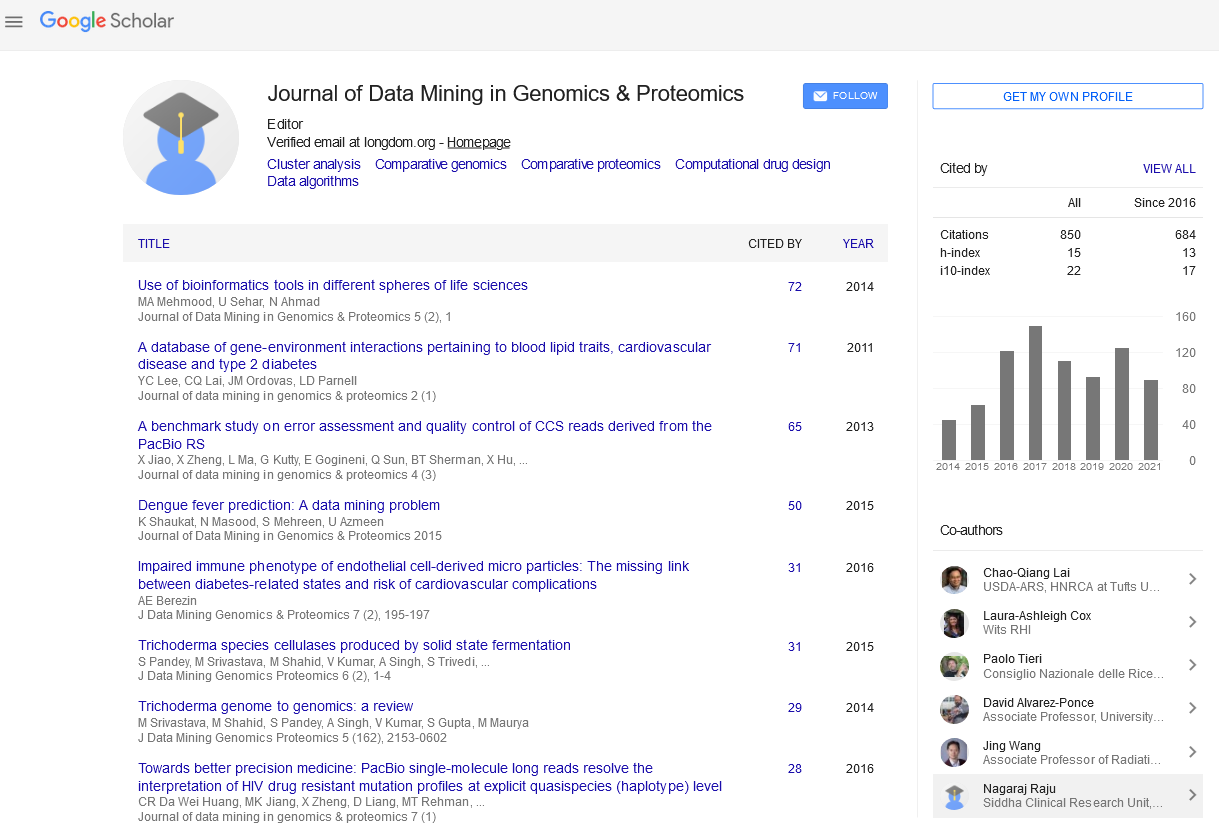PMC/PubMed Indexed Articles
Indexed In
- Academic Journals Database
- Open J Gate
- Genamics JournalSeek
- JournalTOCs
- ResearchBible
- Ulrich's Periodicals Directory
- Electronic Journals Library
- RefSeek
- Hamdard University
- EBSCO A-Z
- OCLC- WorldCat
- Scholarsteer
- SWB online catalog
- Virtual Library of Biology (vifabio)
- Publons
- MIAR
- Geneva Foundation for Medical Education and Research
- Euro Pub
- Google Scholar
Useful Links
Share This Page
Journal Flyer

Open Access Journals
- Agri and Aquaculture
- Biochemistry
- Bioinformatics & Systems Biology
- Business & Management
- Chemistry
- Clinical Sciences
- Engineering
- Food & Nutrition
- General Science
- Genetics & Molecular Biology
- Immunology & Microbiology
- Medical Sciences
- Neuroscience & Psychology
- Nursing & Health Care
- Pharmaceutical Sciences
Abstract
Mammalian Glutamyl Aminopeptidase Genes (ENPEP) and Proteins: Comparative Studies of a Major Contributor to Arterial Hypertension
Roger S Holmes, Kimberley D Spradling-Reeves and Laura A Cox
Glutamyl aminopeptidase (ENPEP) is a member of the M1 family of endopeptidases which are mammalian type II integral membrane zinc-containing endopeptidases. ENPEP is involved in the catabolic pathway of the reninangiotensin system forming angiotensin III, which participates in blood pressure regulation and blood vessel formation. Comparative ENPEP amino acid sequences and structures and ENPEP gene locations were examined using data from several mammalian genome projects. Mammalian ENPEP sequences shared 71-98% identities. Five N-glycosylation sites were conserved for all mammalian ENPEP proteins examined although 9-18 sites were observed, in each case. Sequence alignments, key amino acid residues and predicted secondary and tertiary structures were also studied, including transmembrane and cytoplasmic sequences and active site residues. Highest levels of human ENPEP expression were observed in the terminal ileum of the small intestine and in the kidney cortex. Mammalian ENPEP genes contained 20 coding exons. The human ENPEP gene promoter and first coding exon contained a CpG island (CpG27) and at least 6 transcription factor binding sites, whereas the 3’-UTR region contained 7 miRNA target sites, which may contribute to the regulation of ENPEP gene expression in tissues of the body. Phylogenetic analyses examined the relationships of mammalian ENPEP genes and proteins, including primate, other eutherian, marsupial and monotreme sources, using chicken ENPEP as a primordial sequence for comparative purposes.


